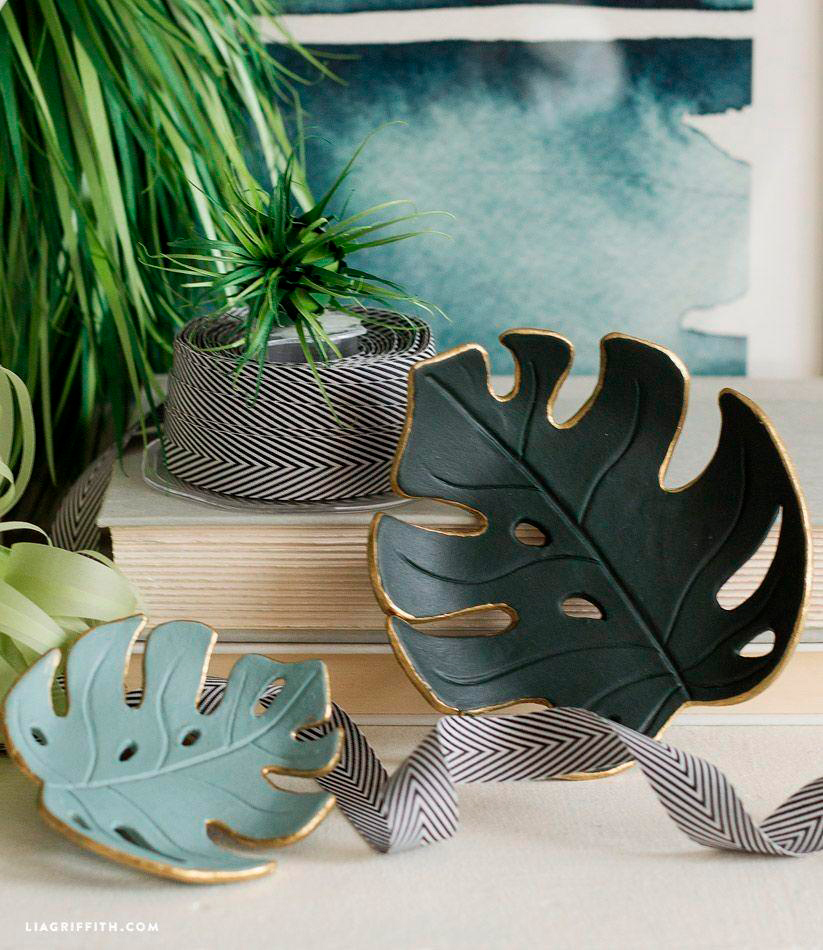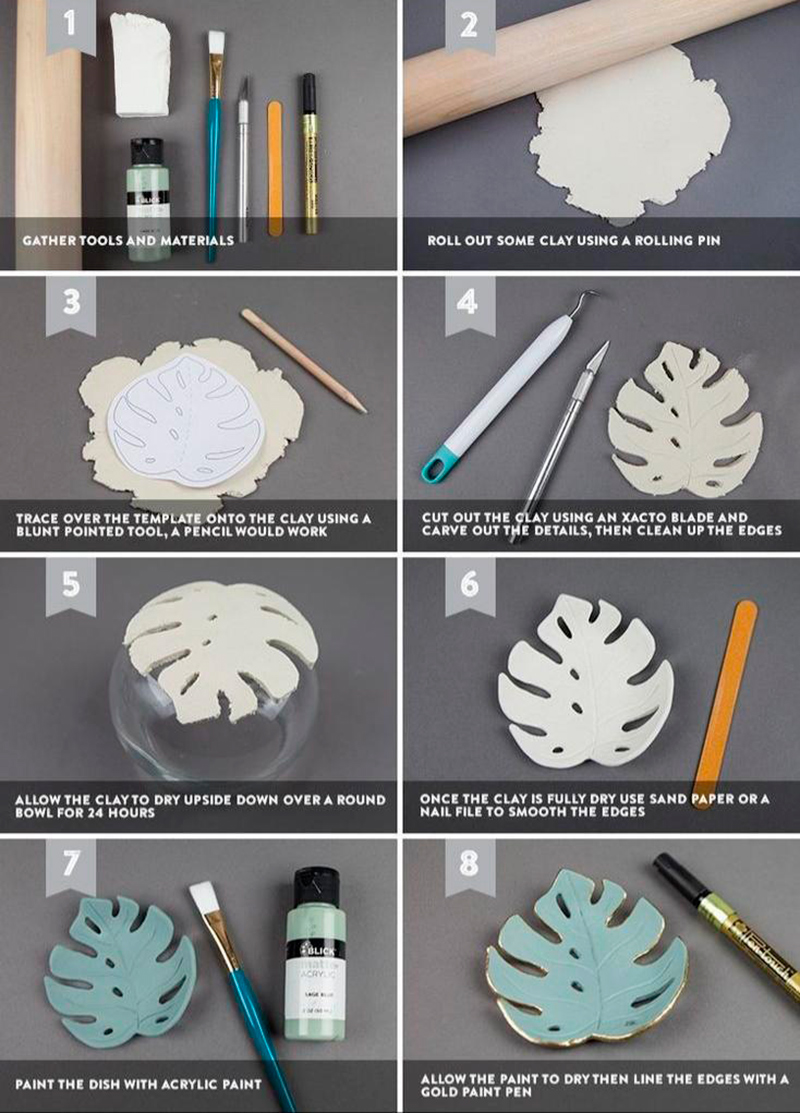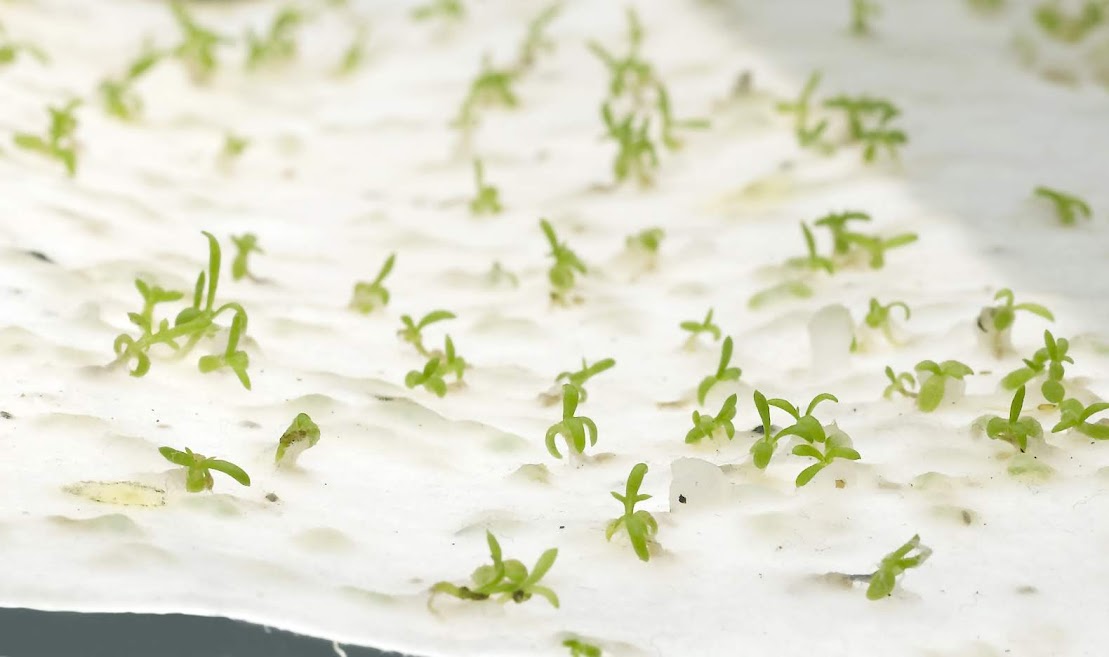Natural inspiration: Monstera deliciosa
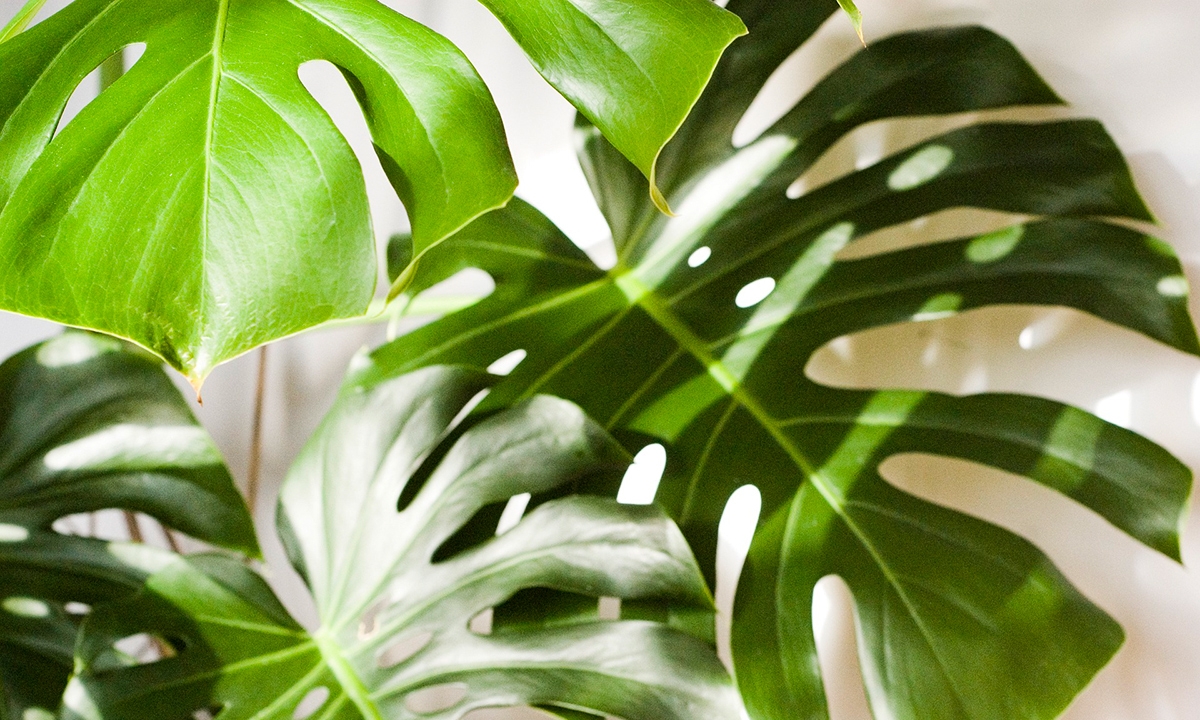
Nowadays, it is one of the top trending plants when it comes to home decor and it even has its own hashtag on Instagram. BALADRE Crafting·Creativity talks about the Monstera deliciosa in this new post, a plant that is always on the top of the most beautiful plants rankings. It has invaded our homes, but not only in the shape of a plant, but also in the shape of prints and all kinds of objects. Keep reading if you want to find out more about this plant!
You’ve definitely seen it in a garden or on some patio and you can recognise it in a heartbeat. And, even if you are not sure about its name, maybe those big and fenestrated leaves have caught your eye. Well, no wonder! It has become one of the most popular plants in the last few years: the Monstera, also known as Swiss cheese plant, split-leaf philodendron, fruit salad plant, ceriman, monster fruit, Mexican breadfruit, balazo or, as my grandmother used to call it, the skeleton.
In the inner courtyard of her house, my grandmother had a beautiful specimen of Monstera deliciosa that I, from a very young age, watched grow majestically. It was so different from the other plants. It was by far my favourite and the only one we kept after my grandmother left us. Yes, I could say it is my favourite plant, but I must confess, considering I am a huge fan of botany, it is quite difficult to choose just one!
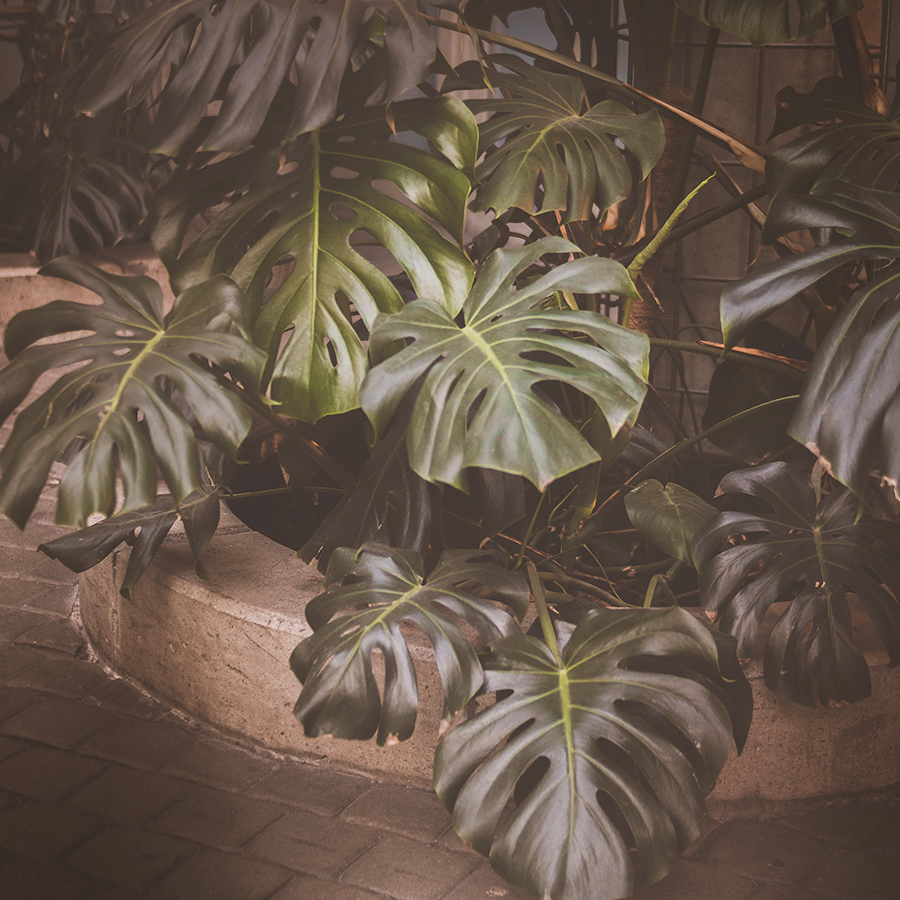 Dominika
Dominika
Among all the different varieties of Monstera, depending on the source you can find up to 60, the Monstera deliciosa is the most popular one.
- Kingdom: Plantae
- Division: Magnoliophyta
- Class: Liliopsida
- Order: Alismatales
- Family: Araceae
- Subfamily: Monsteroideae
- Tribe: Monstereae
- Genus: Monstera
- Species: Monstera deliciosa
A monster of exquisite flavours
The Monstera deliciosa is a climbing species endemic to the rainforest located in Central and Southern Mexico and down to the North of Argentina. It was first described by Danish botanist Frederik Michael Liebmann and published in Videnskabelige Meddelelser fra Dansk Naturhistorisk Forening i Kjøbenhavn (1849: 19). Its name comes from the latin word monstrum (monster) or Monstera (monstrous or unbelievable) due to the appearance of its enormous leaves and those particular, but natural, holes that give the plant a somewhat monstrous and unusual appearance. The word delicious refers to the exquisite flavour of its fruit, also known as “piñanona”, for its unmistakable pineapple and soursop flavour.
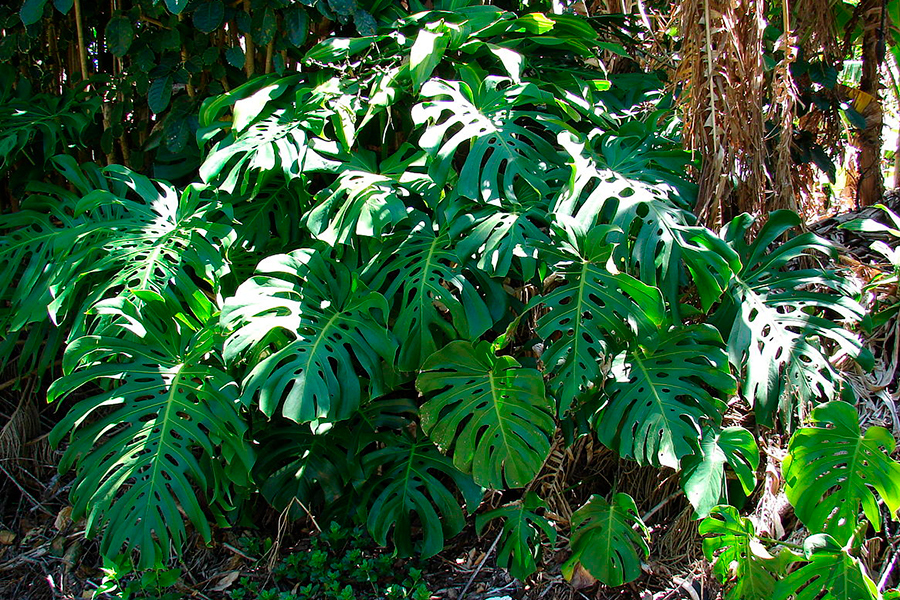 Forest & Kim Starr (Wikimedia)
Forest & Kim Starr (Wikimedia)
It has a thick stalk and it can grow up to 66 ft high. Its leaves are big, flexible, glossy, cordate, 10 to 35.5 inches long and 10 to 29.5 inches wide. Young plants have small, whole leaves, without lobes or holes. But lobes and holes appear as the plant grows. All members of this genus have this kind of leaves. It also has rhizomes with elongated stems. It uses its roots to cling to, attach to and climb tree trunks or other elements to help it search for sunlight. In wild soil, the roots grow and support the plant. When planted in pots, a cane is needed to guide them.
Its flowers are big, white and look like a virgin covered with a white veil. Its reproductive life is very short.
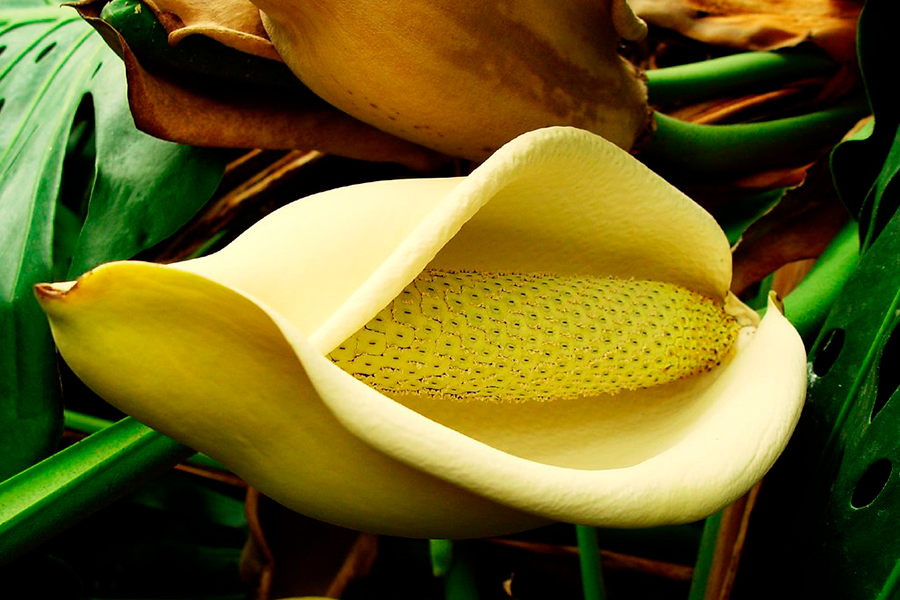 Monstera deliciosa flower. / Chris (Flickr)
Monstera deliciosa flower. / Chris (Flickr)
The fruit of the Monstera looks like a pineapple: it is long, cylindrical, yellow and green and has hexagonal scales. It can get up to 12 inches long and 1 to 2 inches in diameter. Its first fructifications contain a lot of oxalic acid, so they’re toxic. It can’t be eaten until it is completely ripe. If consumed, it can cause irritation, itching, pain, loss of voice and blisters. Once it is ripe, it is safe to eat and it actually tastes like pineapple (Ananas comosus).
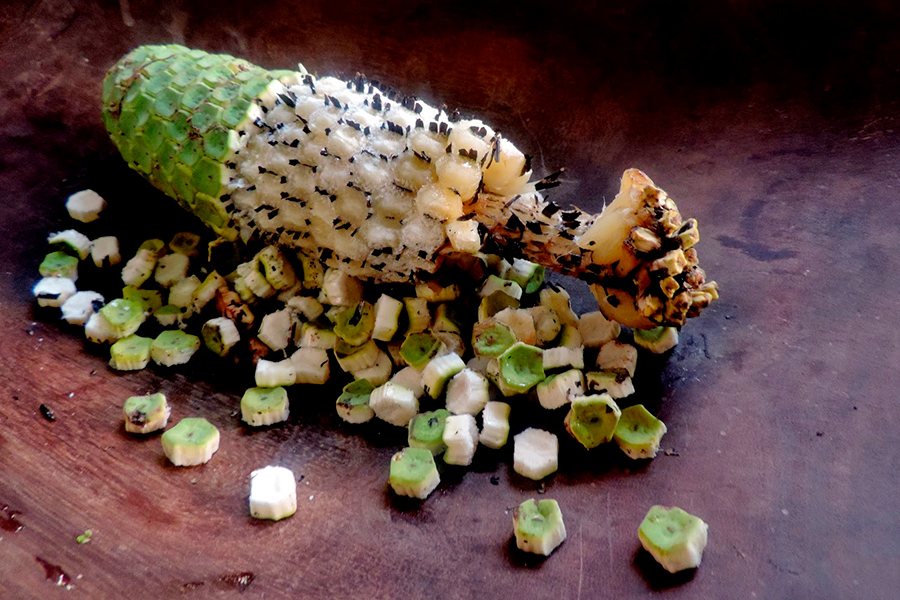 Monstera deliciosa fruit
Monstera deliciosa fruit
As for its uses, in Mexico the roots are used to make baskets and, in Peru, to make ropes. The rhizomes are used in infusions to battle orchitis, arthritis, ear swelling, dandruff and ulcers. At home, it helps, like many other plants, to purify the air.
How to keep your Monstera happy
This plant grows better in mild climates, where minimum temperatures are always over 50 °F. It can tolerate temperatures up to 80 °F without being severely harmed. When it comes to light, this plant prefers places that do not receive direct sunlight. Preferably, they should be in the shade but with good lighting, i.e., filtered or diffused light. It should be noted it is almost impossible for them to bloom indoors , while in their natural habitat flowers start to appear after three years of age.
Watering must be moderate, because it does not tolerate the excess of water. If it is kept in the shade, watering it twice a week should be enough. During the rainy season or winter, it would only be necessary to water it every 10 days. It is best to spray the leaves with a fine-particle sprayer.
It needs organic soil mixed with a high quantity of humus. If the soil is in bad condition, you will notice it because the leaves will turn yellow and the plant will grow slowly. It is recommended to add fertiliser each season of the year, so the nutrients have the time to be released into the soil. For example, you can add liquid fertiliser every two weeks to benefit its growth and improve the green colour of the leaves.
Do you want to learn more? Let me tell you how to propagate your Monstera!
Propagating your Monstera is not difficult at all. You only have to cut its youngest stem, including the leaf and aerial root. Another option is planting seeds produced by the plants in the warmest climates. As we’ve said before, it is difficult for it to bloom at home, so it won’t bear fruit.
If we prefer to plant slips, the best time of the year to do it is the summer. We should preferably use apical stems, which we will put directly on the definitive pot or soil. After 4 or 6 weeks, roots will start growing. We can also slip node sprouts, with or without leaves, but it would take longer for them to grow.
Why do they have those holes on the leaves? A couple of theories
The huge leaves of the Monstera have a very particular shape, with prominent lobulations and multiple holes. It has to be said that they grow differently throughout their development. Thus, at the beginning they are small and lack holes, and because we are talking about a climbing epiphyte this usually happens when they are close to the ground. But later, when they are adults, they already have these holes. This unique characteristic has been the subject of many theories.
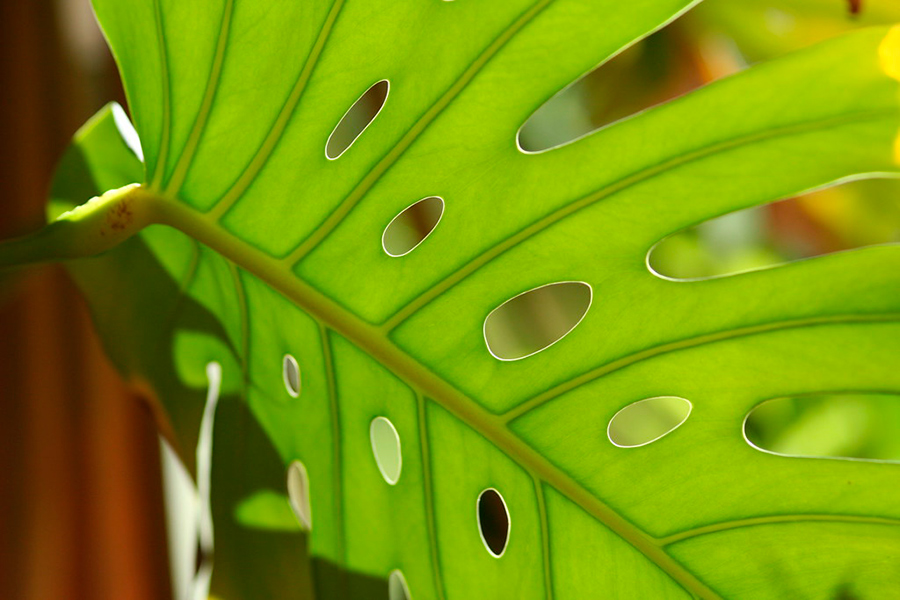 Andrew Fogg (Flickr)
Andrew Fogg (Flickr)
In the middle of the jungle, the light is dim and typically enters through the canopy in the shape of scattered rays of light. As the plant grows, it increases in height, thus the intensity and frequency of those rays also increase. After successive modelings, it was discovered that, given the same surface, a plant with holes can cover more space increasing the possibilities of capturing a ray of light. Although, in some cases, they can be less productive due to those holes. This is a very interesting adaptation for survival in very low light conditions.
On another note, you may also know the Monstera as the “stressed plant “. According to scientist Christopher Muir, those holes on the leaves help the plant release stress and, at the same time, capture sunlight on a more regular basis. In addition, the holes protect the plant from hurricanes because they let the wind pass through.
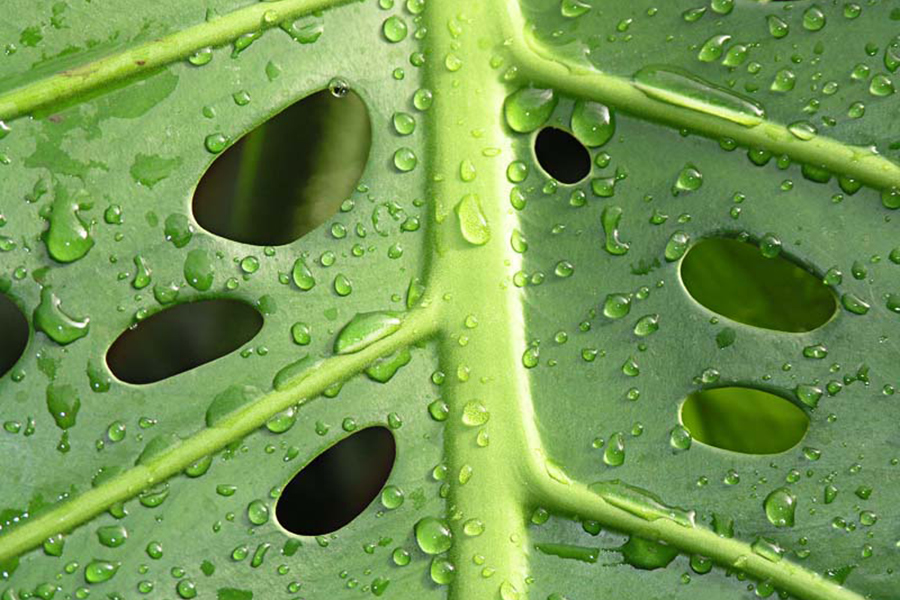 Grytr (Flickr)
Grytr (Flickr)
And last but no least, another theory suggests holes let water flow through the plant allowing temperature regulation. And they can even camouflage the plants to protect them from herbivores!
Training the eye to identify different varieties of Monstera
The Monstera borsigiana and the deliciosa look similar and they are often mistaken for one another, because when they are young, they are almost identical. In fact, most Monsteras sold nowadays as deliciosas are actually borsigianum. The Monstera borsigiana‘s bearing is smaller, its leaves are also smaller and have fewer holes. The real Monstera deliciosa has a sort of flounce on the part of the stem located just before the leave. However, the borsigiana‘s stem is even.
The Monstera adansonii has smaller, but still holey, leaves than Monstera deliciosa. It grows well in pots aided by canes, climbing walls or with its stems falling from a hanging pot.
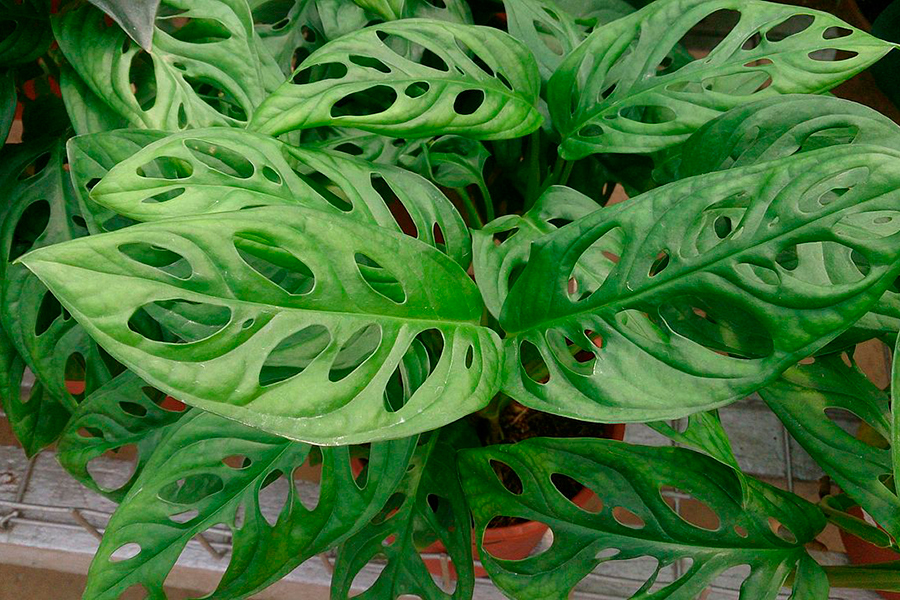 Monstera obliqua / Mokkie (Wikimedia)
Monstera obliqua / Mokkie (Wikimedia)
As for the Monstera obliqua, it has very thin leaves with enormous holes occupying almost the whole leaf. It is quite difficult to find it in stores. If you do find it, it will probably be a M. adansonii or, sometimes, a hybrid variety. The leaves of the adansonii are stronger and the surface occupied by holes is considerably smaller.
Finally, the variegata gets its name, as you may have guessed, from the colouring of its leaves. It is a normal Monstera deliciosa but its leaves have some white strokes and even some leaves are completely white. They are super cute and also becoming more available in stores.
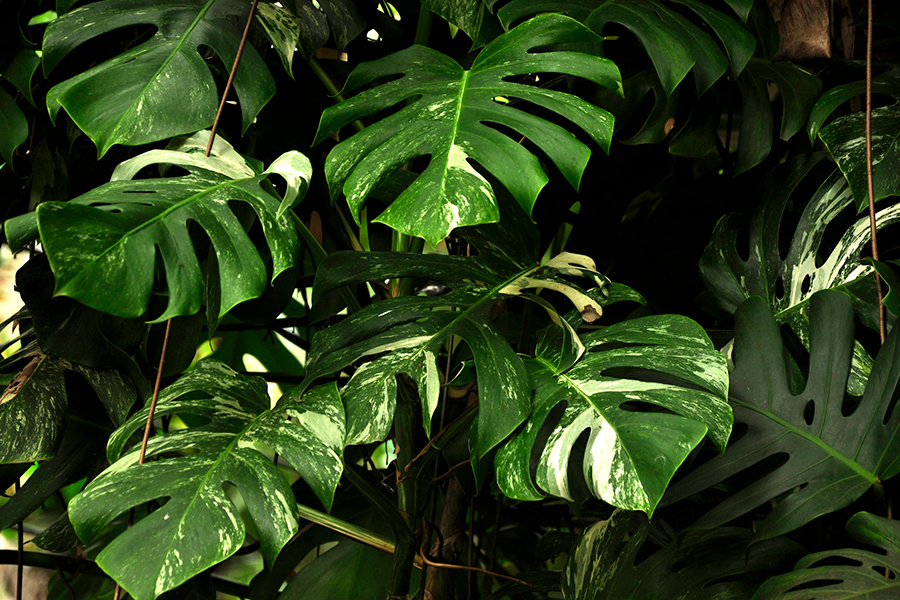 Monstera variegata. / Joanna Pędzich-Opioła
Monstera variegata. / Joanna Pędzich-Opioła
The trendiest plant, the queen of Instagram
As I have said at the beginning of the article, in recent years it has become the trendiest plant in interior design. It is perfect for creating contrast with other decorative elements. It can be used to decorate spaces such as living rooms, offices, gardens, halls or building entrances. Moreover, it easily grows in big plastic or clay pots, it creates great volume and is very ornamental due to the size of its intense green leaves.
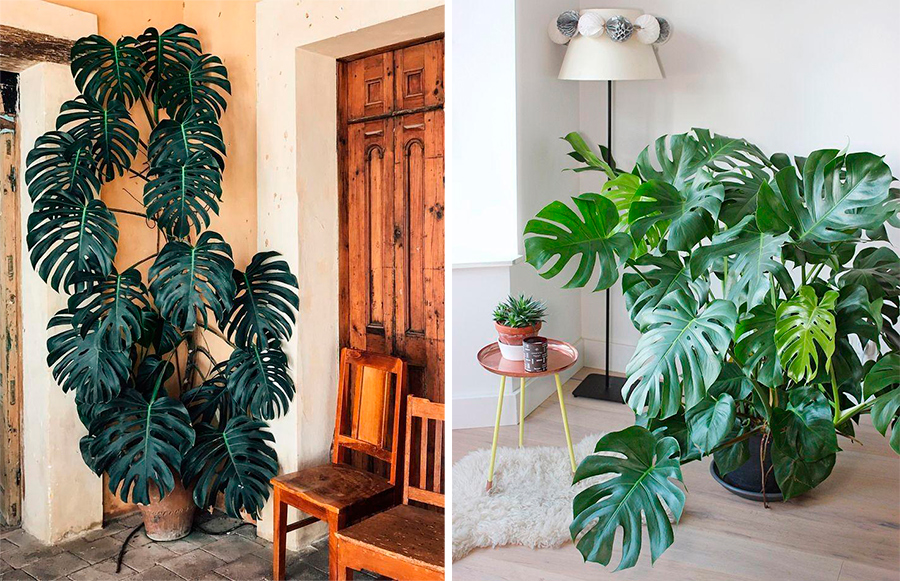
And it not only thrives indoors, if you prefer, you can plant it directly in your garden so it can grow under the trees. But remember it needs a lot of shade and some place to climb!
It has also been widely portrayed in murals, prints and other decorative objects. The Monstera fever has hit us hard, and no wonder because she is a beauty! But there is more! Surfing on the Internet, I have found some amazing wedding decorations using its leaves, gorgeous bridal bouquets, photocalls or even some very original centrepieces. But all in good measure, you know what I think: Less is more!
Furthermore, not many plants can brag about having their own hashtag! If you follow #Monsteramonday, you will realise how this majestic and buoyant plant stirs up high passions. You will see people all over the world showing their little plants or hiding behind their gigantic specimens. A world of Monstera varieties, inspiration and originality just clic away!
It’s summer DIY time!
I could not finish this article without a little DIY to decorate your home: a small bowl extremely easy to make and so cute everybody will want one!
Materials:
- Air dry clay
- Wood rolling pin
- Monstera stencil
- Craft scalpel
- File
- Paint and brush for clay
- Gold permanent marker (or silver, you choose!)
Steps:
Once we have gathered all the materials we are good to go!
- Roll out the clay using the rolling pin. Make sure the thickness of your clay is perfectly even.
- Place the Monstera stencil on the clay.
- Cut, carefully, following the shape of the leaf.
- To achieve the shape of a bowl, let it dry on a little bowl or any other object with a concave surface.
- Once it’s dry, file the edges to make them smooth.
- Paint it and let it dry.
- Paint the edge of the bowl using the permanent marker.
- Done! You have your trendy Monstera bowl!
Tip: To achieve a more durable finishing, spray a layer of varnish (matt or gloss).
Easy-peasy! Now it’s your turn to clay! And remember: I post all my ideas and pictures (and much more!) on the Pinterest board ESPORES – Inspiració Natural.
Have a good summer!
This post is dedicated to my grandma, Hortensia,
who showed me the beauty in plants
and how to be patient to witness them
grow, bloom and live.
SOURCES: Wikipedia, Hogarmania, Monsteradeliciosa.com, Flores Ninja, Infoagro, Sembramos.com






